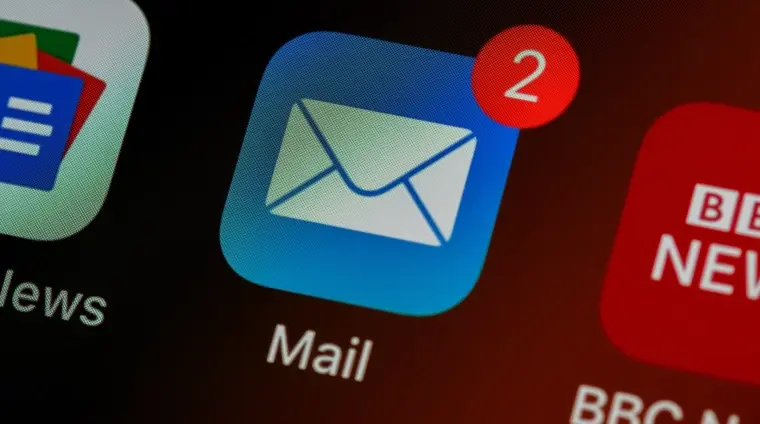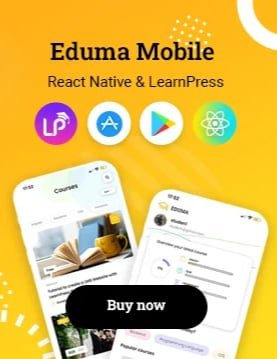In today’s world, digital advertising is complex. Yet, there’s a standout: Programmatic advertising can show the right ad to the right person in less than a second. Using AI and machine learning, it changes how ads find their audience. This method looks at data and decides where ads will have the best effect in real-time.
This tech uses many sources of data, like keywords and locations, to make buying and selling ads online easier. Programmatic advertising has quickly become more common. Its growth has dramatically changed how online ad space is traded.
Key players like the Interactive Advertising Bureau (IAB) say programmatic advertising is now a must-have for digital ad budgets. According to Statista, spending on these ads will pass 558 billion U.S. dollars by 2023 and hit 700 billion by 2026. The fast rise of programmatic advertising is due to its power to handle large ad campaigns efficiently.
Key Takeaways
- Programmatic advertising utilizes AI and machine learning to automate and optimize ad placement for maximum impact.
- Programmatic advertising leverages a blend of data sources to facilitate the buying and selling of online advertising in open and private marketplaces.
- The global programmatic ad spend is projected to reach $557.56 billion in 2023 and continue growing, reflecting the widespread adoption and effectiveness of this technology.
- Programmatic advertising streamlines the advertising process, offering greater efficiency, targeted reach, transparency, and measurability for advertisers.
- The rapid expansion of programmatic advertising can be attributed to its ability to efficiently scale the advertising process while delivering highly targeted and personalized ads.
The Rise of Programmatic Advertising
Programmatic advertising has many advantages for advertisers. It helps brands automate buying media space. This means they can reach their audience better. And, it allows publishers to see how well their content is doing in real time.
This method lets ads be shown to the right people, at the right time. Automation and AI play a big role in this. They work together to send messages that fit the audience perfectly.
What is Programmatic Advertising?
The story of programmatic ads starts with an AT&T banner on WIRED in 1994. This ad got a huge click-through rate of 44%. But back then, it didn’t track if the right people were seeing it.
Programmatic Advertising’s Growth and Impact
As digital ads’ popularity grew, so did the need for better tools. Soon, ad servers and software for real-time bidding came about. They let advertisers and publishers work together smoothly. Now, programmatic ads make up most of the digital display market, with a share of 72%.
The Programmatic Advertising Ecosystem
The programmatic advertising ecosystem is a network of parts that work together. They make automated digital ad buying and selling happen. The main parts include Demand-Side Platforms (DSPs), Supply-Side Platforms (SSPs), and ad exchanges.
Demand-Side Platforms (DSPs)
Demand-Side Platforms (DSPs) help advertisers and agencies buy ads easier. They do this through connecting with publishers via SSPs, ad exchanges, and more. DSPs let advertisers pick their audience based on various information. This includes things like age, what people buy, and what sites they visit. It helps make ads specific and personal.
Supply-Side Platforms (SSPs)
Supply-Side Platforms (SSPs) are tools for publishers. They help manage and sell ad space. By linking publishers with numerous buyers, SSPs make sure ads get seen by more potential customers. This competition helps publishers earn more from ads.
Ad Exchanges
Ad exchanges are like online markets for ads. Here, everyone involved can bid in real-time to buy and sell ad space. Advertisers decide how much they want to pay for specific ads through this process. This helps them understand where their ads will be, making their advertising choices smarter.
DSPs, SSPs, and ad exchanges work closely together. They form the backbone of the programmatic advertising world. Thanks to them, advertisers can easily find their target audience on digital platforms and sites.
Real-Time Bidding (RTB) and Header Bidding
Real-time bidding (RTB) is a method for advertisers to buy ads in real time. They join an auction when an available ad space shows up. If they win the auction, their ad shows up right away on the website.
This process lets advertisers target only the ads they find most relevant. This method is quick and helps advertisers use their funds smartly.
Header bidding, on the other hand, is a tech for website owners. It lets them ask for ad bids from many places all at once. Then, they choose the highest bid and show that ad on their site. This way, many advertisers can bid on the same space, giving website owners more money and advertisers better spots for their ads.
Both RTB and header bidding are keys in the world of real-time ad buying. They make it possible for advertisers to get digital ad space easily and quickly.
Programmatic Advertising Channels
Programmatic advertising has changed how brands connect with people. It uses various ad channels. These range from basic display ads to interactive videos and social media. This technology has completely changed digital marketing.
Display Advertising
Programmatic display ads are visual ads on websites or apps. They can be in the header, footer, or sidebar. They update and change based on who’s looking. This makes sure ads are always relevant to the viewer.
Video Advertising
In-programmatic video ads, you see ads before, during, or after videos. There are also ads that pop-up while reading articles. Brands can show videos to specific people based on their preferences and habits.
Social Media Advertising
You can buy ads through social media, using APIs or DSPs, on platforms like Facebook and Instagram. This approach lets brands target their ads to specific user interests and behaviors.
Native Advertising
Programmatic native ads fit right in with the website or app they’re on. They look natural, which makes user experiences better. This way, they can catch the user’s eye without being too obvious.
Audio Advertising
With programmatic audio ads, you can target listeners based on their music tastes and where they’re from. It’s a unique way for brands to reach people through Spotify and podcasts. As people listen, they can hear about new products or services.
Digital Out-of-Home (DOOH) Advertising
Programmatic DOOH ads show on screens in public spaces. They’re tailored to the area around them, reaching people as they go about their day. This is a way to bring digital ads outside, leveraging more advanced ways to find the right audience.
In-App Advertising
In-app ads reach people where they spend a lot of time: on their mobile apps. These ads blend in with apps, catching users’ attention when they’re focused on the app. It’s a direct way for brands to talk to their target audience.
Using programmatic advertising, brands can connect with their audience in many digital ways. They can reach people where they are most involved. This helps them make the most of their advertising budget.
Data and Targeting in Programmatic Advertising
Programmatic advertising uses different data to show ads to specific people. First-party data is info that a business collects from its customers. It includes what they do on the website, buy, and subscribe to by email. Third-party data is from outside sources, like their age, interests, and where they live. Advertisers mix first-party and third-party data to target ads. They aim for an exact group by knowing a lot about them.
Audience Segmentation and Targeting
Getting the right ads to the right people is important for programmatic advertising to work. Thanks to specific ways of targeting, like following their habits, where they are, and what they’re interested in, advertisers can hit their mark. This helps ads perform better and get more value for the money spent.
Programmatic Advertising Strategies
Programmatic advertising lets advertisers buy digital ad space using different strategies. They can choose from open marketplaces, private ones, preferred deals, and programmatic guaranteed. Each way helps tailor campaigns for specific goals, audiences, and budgets.
Open Marketplaces (RTB)
Open marketplaces, or real-time bidding (RTB), host public auctions. Advertisers can bid on ad spaces as they become available. This quick, data-driven approach helps them find and buy the best ad spaces on the fly.
Private Marketplaces (PMPs)
Private marketplaces, or PMPs, are invite-only. They let advertisers access top-notch ad space from chosen publishers. Using these platforms often ensures ads are shown in a more controlled, safer environment.
Preferred Deals
In preferred deals, advertisers and publishers set up special agreements. Advertisers might get the best ad positions or a set number of views. It lets them grab prime ad space to reach their audience more effectively.
Programmatic Guaranteed
With programmatic guaranteed, both the advertiser and publisher sign a deal. They agree on the number of views, the cost, and other terms, skipping live auctions. This method guarantees advertisers will meet their visibility and campaign goals.
Benefits of Programmatic Advertising
Programmatic advertising has lots of perks for those who advertise. It makes buying ads more automated and efficient. This means less time and effort is spent compared to old ways of advertising.
Programmatic advertising also allows for more precise targeting. Advertisers can use data to show ads to the exact people who might be interested. This way, they don’t show ads to those who won’t care, which makes campaigns work better.
This method also lets advertisers see how their ads are doing quickly. They can watch things like how many people saw the ad, clicked on it, and if they bought something because of it. This helps understand what’s working and what needs to change.
Efficiency and Automation
Programmatic advertising turns a complicated process into a simple one. Advertisers spend less time and energy making ads go live. This means they can put more thought into the big picture of their ads.
Targeted Reach
With programmatic advertising, advertisers can find their exact audience. They use data and segmentation to reach the most interested people. This avoids showing ads to those who aren’t likely to buy. It makes ad campaigns more efficient.
Transparency and Measurability
Programmatic advertising is clear and easy to measure. Advertisers can keep an eye on their ad’s performance in real-time. They look at things like who saw the ad and what they did next. Then, they can use this information to make their ads even better.

Challenges in Programmatic Advertising
Programmatic advertising has many benefits but also faces challenges. One main issue is that the programmatic market is becoming like a commodity. This happens because there’s a lot of competition and ads available. Such a situation can lower prices and profit margins for advertisers. This makes it hard for advertisers to stand out.
Commoditization and Inventory Scarcity
Programmatic advertising struggles with a lack of available premium ad space. High-quality ad space might be in short supply. As a result, advertisers may find it difficult to get the best spots. This shortage can lead to higher prices and increase competition. Both of these can make programmatic advertising less efficient and more costly for advertisers.
Brand Safety and Ad Fraud
Keeping your brand safe from harmful or incorrect placements is a huge concern. The programmatic ad world can sometimes place ads in bad places. Also, ad fraud is a big deal. It makes phony views or clicks increase costs and mess up budget plans. These issues are why advertisers must always keep an eye out and squash fraud whenever possible.
Learning Curve and Expertise
The programmatic ad world is technical and tough to learn at first. It involves understanding many platforms, data, and strategies. To do well, advertisers need to invest in learning and possibly hire more tech-savvy staff. This is to make sure they’re getting the most from their programmatic efforts.
Solving these challenges is key to gaining the full benefit from programmatic ads. By staying up-to-date, making sure ads are in safe places, and improving strategies constantly, advertisers can win over these hurdles. They can then enjoy the power of programmatic ads to the fullest.
Programmatic Advertising
The digital marketing world has changed with programmatic advertising. It allows advertisers to run campaigns smoothly. They can now find their desired viewers more efficiently. It is a key tool for those wanting to make the most of their digital ads.
Programmatic advertising uses tech to automate buying ads. Algorithms and instant data analysis make it possible to show the perfect ad to a viewer in under a second. This means less wasted ads and more chances to make campaigns better.
Technologies like header bidding and supply-side platforms are vital for this. They help advertisers find a lot of ad space and bid for the best spots.
This kind of ad buying has many good points, like better targeting, clear insight, and real-time updates. Advertisers can now aim their messages at exactly who they want based on lots of data. This helps them connect better with people and see results faster.
| Programmatic Advertising Metrics | Importance |
|---|---|
| Impressions | Measure the overall reach and exposure of the ad campaign. |
| Clicks | Indicate user engagement and interest in the advertised product or service. |
| Click-Through Rate (CTR) | Evaluate the effectiveness of the ad creative and targeting strategies. |
| Cost-Per-Click (CPC) | Determine the efficiency of the ad spend in relation to user engagement. |
| Conversions | Measure the ultimate success of the campaign in driving desired actions, such as sales or lead generation. |
To keep up with this changing technology, advertisers need to follow the latest trends and tricks. By using programmatic advertising well, companies and advertisers can find new paths to growth. They can connect with their audience better in our digital-focused world.
Setting Up and Optimizing Programmatic Campaigns
To get the most out of a programmatic ad campaign, advertisers must pay attention to many setup details. They start by setting clear goals for the campaign. This could be aiming to introduce new products or boost sales. Then, they pick the best ad types, like display or video ads, to reach these goals.
Campaign Goals and Ad Types
Figuring out the budget and how to bid is very important. It decides if the campaign is good value. Advertisers need to plan how much they’ll spend. And they must bid smartly to get the best deal on ads. They consider factors such as CPM, audience size, and how long the campaign will run.
Budgeting and Bidding Strategies
After the campaign starts, advertisers can watch how it’s doing in real-time. They look at numbers like CTR, CPC, how much has been spent, and conversions. This information helps them tweak the campaign to make it work better. They might adjust who they’re targeting, the ads they show, or how much they’re bidding, to improve results.
Campaign Optimization and Reporting
There are a few tactics to make programmatic campaigns even better. These include defining clear goals, breaking down the target audience, and testing different ad designs. Using automation and analysis is key. By doing this, advertisers can make their campaigns more efficient and relevant. This would drive more interaction with their ads and lead to better results from the money they spend.

Measuring Programmatic Advertising Success
To know if a programmatic ad campaign succeeds, we look at many metrics. These include how many times the ad shows up, how often people click on it, and the actions they take. Yet, measuring the real effect means matching these metrics to what the business wants.
Key Performance Indicators (KPIs)
For making a brand known and reaching people, look at metrics like reach, frequency, share of voice, and brand lift. To understand if people are paying attention and might buy, check completed views, site visits, engagement, and lead generation. If the goal is to sell, important metrics are return on ad spend (ROAS), return on investment (ROI), sales, and subscriptions.
Branding and Awareness Metrics
By picking the right KPIs, advertisers learn if their ads are working. This applies to metrics like reach and brand lift, showing if the brand gets noticed more.
Consideration and Purchase Metrics
To see if people are really interested or buying, track completed views and site visits. These show how well the ads are convincing people to act. Metrics like ROAS and ROI reveal the campaign’s performance and profit.
Programmatic Advertising Case Studies
Programmatic advertising shows its power through real cases. Take Bajaj Finserv as an example. They teamed up with Amazon Ads to find the right eyes for their Insta EMI card. They placed display ads via Amazon DSP, steering potential customers towards an application page for info on the product.
Then, there’s Lenovo, who used programmatic ads for their new laptops. They mixed their own data with third-party insights to pinpoint their perfect audiences. This approach brought them 30% more visitors to their site and a 25% sales jump.
Lastly, Reckitt, a top name in health and hygiene, got big wins from their ads. They crafted a strategy using data, behavior predictions, and flexible ads. The results? A 35% rise in people knowing their brand and a 28% increase in those thinking about buying from them.
| Brand | Programmatic Advertising Results |
|---|---|
| Bajaj Finserv | Efficiently targeted and engaged potential customers for Insta EMI card through Amazon DSP display ads |
| Lenovo | 30% increase in website traffic and 25% boost in product sales by leveraging first-party data and third-party audience targeting |
| Reckitt | 35% increase in brand awareness and 28% uplift in purchase consideration through data-driven targeting and dynamic creative optimization |
These examples prove how programmatic ads can make a big difference in different sectors. Thanks to precise targeting and smart optimization, these companies enlarged their audience, recognition, and sales.
Tools and Technologies for Programmatic Advertising
Programmatic advertising relies on various tools and tech to manage the buying, selling, and tracking of ads online. These systems are key to making the AdTech world work smoothly. They help advertisers and publishers get the most out of their digital marketing efforts with data-led strategies.
Demand-Side Platforms (DSPs)
DSPs act as the main software for advertisers and agencies in programmatic ad buying. They link advertisers to several SSPs, ad exchanges, and networks. This gives advertisers access to lots of ad space and helps them aim their ads accurately using data and smart tech. DSPs are crucial for hitting the right audience and making ads more efficient as campaigns run.
Supply-Side Platforms (SSPs)
Supply-Side Platforms (SSPs) serve the publishers by connecting them to ad exchanges in the programmatic space. They help publishers sell their ad space wisely by working with many ad exchanges, DSPs, and networks. This way, publishers are in a better position to make more money. They can choose how they sell and earn more from these programmatic advertising tools.
Ad Servers and Measurement Tools
Besides DSPs and SSPs, we have ad servers and measuring tech in the AdTech world. Ad servers put ads on websites and apps and pay close attention to how ads do. They look at things like views, clicks, and sales. Measurement tools offer a deep dive into how well ads are really performing. They help advertisers and publishers make better choices based on their ad campaign data.
All these tools and tech help advertisers and publishers find their way in the complex world of programmatic advertising. They help make campaigns better, more efficient, and effective. And, they lead to better outcomes and making more from the ads.
Conclusion
Programmatic advertising is changing how digital marketing works. It’s making ads more direct and engaging for the people who see them. With advanced tech, ads can be tailored to each person.
This tech world includes DSPs, SSPs, and ad exchanges. They all help make buying and selling ads online easier and cheaper. Thanks to RTB and header bidding, advertisers can now get the best ad spots in real time.
Programmatic ads can be seen on many platforms. They help companies get their names out there, reach more people, and spend their money wisely. AI has made this even better, with smart tools for data and instant decisions.
Programmatic advertising is becoming more and more important in marketing. It’s all about using smart strategies to reach the perfect audience. The future will blend human creativity with AI for even better marketing results.
FAQ
What is programmatic advertising?
How has programmatic advertising grown and impacted the industry?
What are the key components of the programmatic advertising ecosystem?
What are real-time bidding (RTB) and header bidding?
What are the different programmatic advertising channels?
How do advertisers leverage data and targeting in programmatic advertising?
What are the different programmatic advertising strategies?
What are the benefits of programmatic advertising?
What are the challenges in programmatic advertising?
How can advertisers set up and optimize programmatic advertising campaigns?
How can the success of a programmatic advertising campaign be measured?
Can you provide examples of successful programmatic advertising case studies?
What tools and technologies support the programmatic advertising ecosystem?
Source Links
- https://advertising.amazon.com/blog/programmatic-advertising
- https://www.outbrain.com/blog/programmatic-advertising/
- https://www.appsflyer.com/resources/guides/programmatic-advertising/
- https://www.emarketer.com/insights/programmatic-digital-display-ad-spending/
- https://www.novatiq.com/programmatic-advertising-trends-to-watch/
- https://www.peripherydigital.com/blog/the-rise-of-programmatic-advertising-why-is-it-popular
- https://www.adbutler.com/blog/article/the-programmatic-advertising-ecosystem-explained-the-complete-guide
- https://www.adsmurai.com/en/articles/exploring-the-ecosystem-of-programmatic-advertising
- https://clearcode.cc/blog/difference-between-rtb-programmatic/
- https://www.emodoinc.com/blog/real-time-bidding-rtb/
- https://www.adjust.com/glossary/real-time-bidding/
- https://conceptltd.com/blog/the-six-main-programmatic-advertising-channels
- https://www.mcsaatchiperformance.com/news/programmatic-marketing-channels/
- https://www.s2wmedia.com/blogs/first-party-data-in-programmatic-advertising
- https://smartyads.com/blog/programmatic-targeting
- https://www.emodoinc.com/blog/targeting-the-right-audience-in-programmatic-advertising/
- https://www.s2wmedia.com/blogs/programmatic-advertising-strategies
- https://www.impactmybiz.com/blog/benefits-of-programmatic-advertising/
- https://www.adjust.com/blog/programmatic-advertising-explained/
- https://www.outbrain.com/blog/top-5-programmatic-advertising-challenges-and-benefits/
- https://www.bannerflow.com/blog/challenges-programmatic-advertising
- https://www.adjust.com/glossary/programmatic-media-buying/
- https://adcopy.ai/post/programmatic-campaign-optimization-best-practices
- https://www.portent.com/blog/programmatic/programmatic-campaign-optimization-tips-and-tricks.htm
- https://programetrix.com/programetrix-blog/programmatic-channels/programmatic-ad-optimization-explained/
- https://www.tatvic.com/blog/how-to-optimize-programmatic-advertising-with-key-ads-metrics/
- https://www.warroominc.com/institute-library/blog/7-metrics-to-measure-when-running-programmatic-ads/
- https://befoundonline.com/blog/7-programmatic-ad-kpis-to-measure-success
- https://www.singlegrain.com/blog/programmatic-advertising-case-studies/
- https://www.linkedin.com/pulse/top-programmatic-advertising-case-studies-you-need-see-gomez-ysy3c
- https://econsultancy.com/four-creative-programmatic-advertising-case-studies/
- https://www.joshmeah.com/blog/programmatic-advertising-methods-tools-for-leveraging-automation
- https://www.paved.com/blog/programmatic-ad-platforms/
- https://improvado.io/blog/top-programmatic-platforms
- https://mediamaxnetwork.com/industry-insights/programmatic-advertising-platforms/
- https://www.linkedin.com/pulse/programmatic-advertising-future-marketing-treadonmedia-hrsof
















